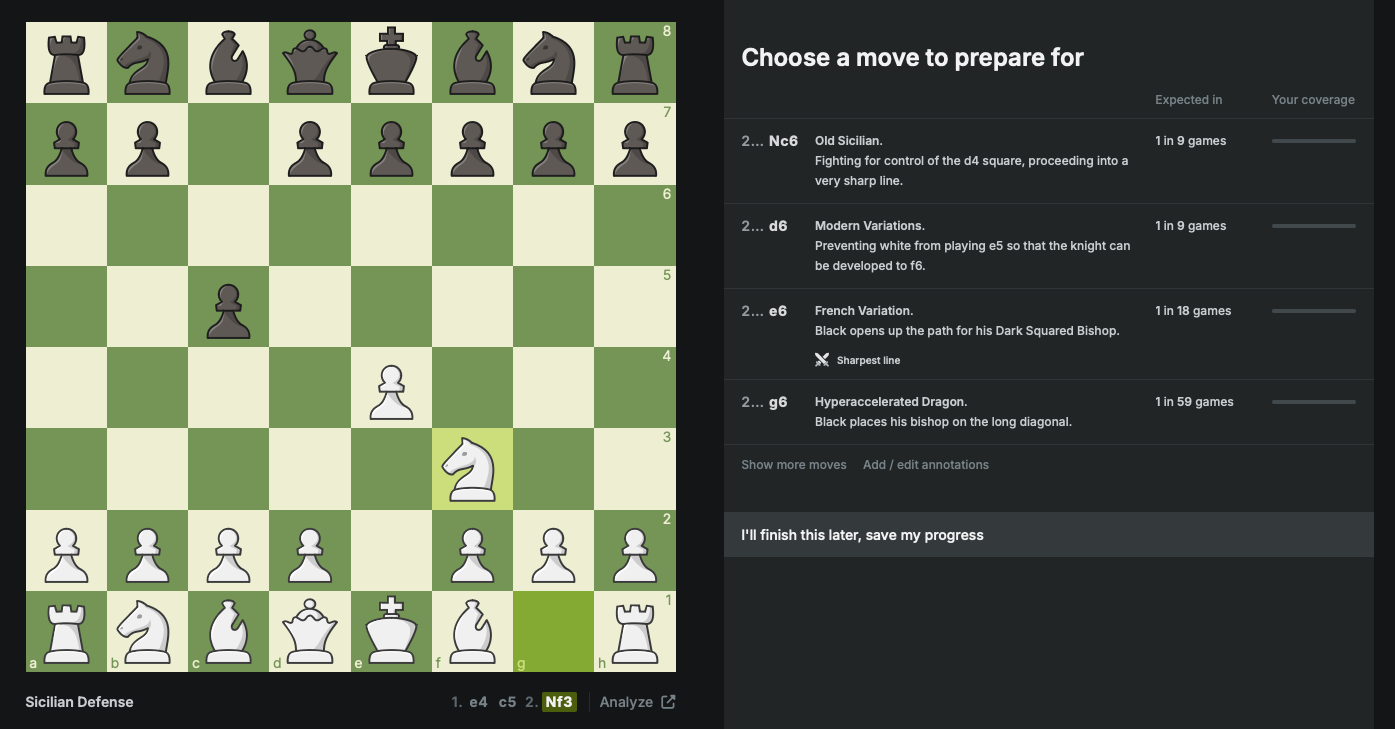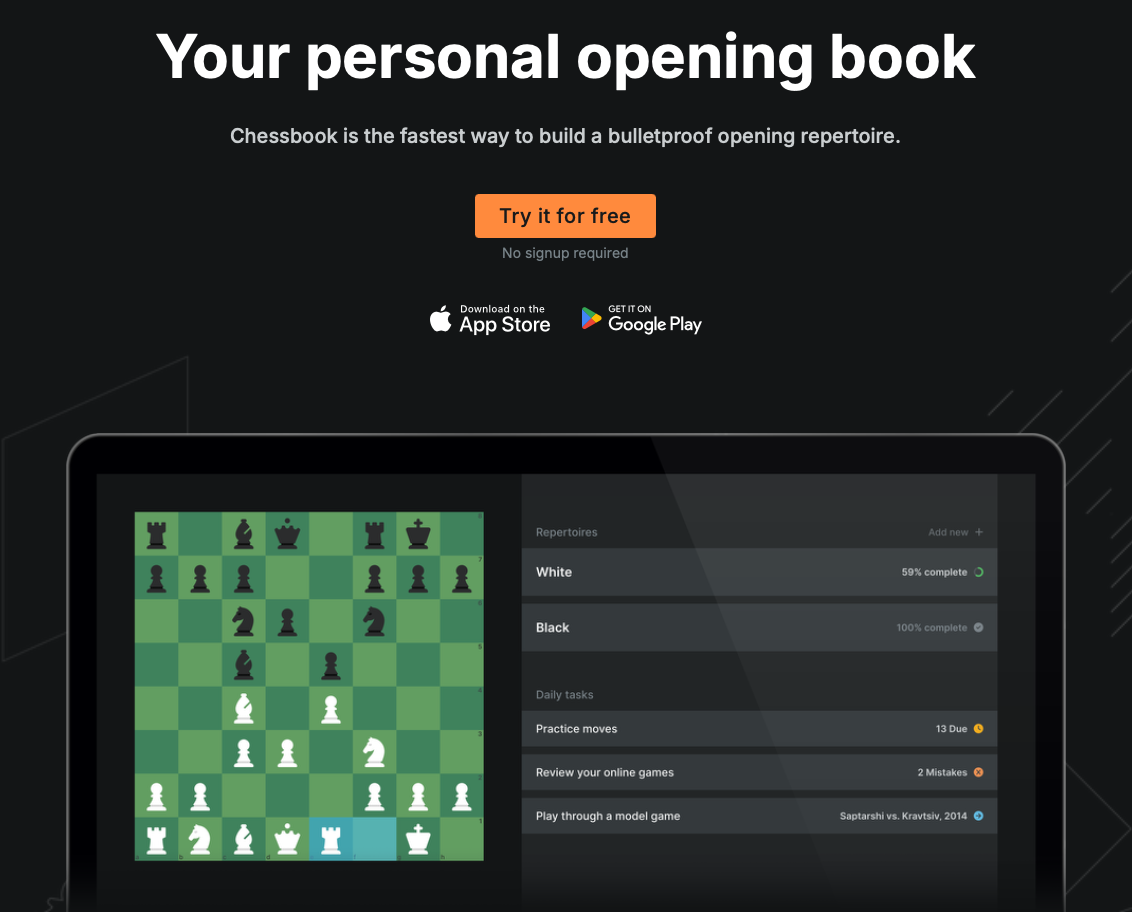This was also published on the MattPlaysChess Substack. Join me there!

Photo by Leanna Cushman on Unsplash
As adult chess improvers, we’re constantly seeking effective tools to enhance our skills and make meaningful progress. In my journey to refine my chess game, I’ve discovered a tool that has become an essential part of my study routine: Chessbook. In this post, I’ll share my experience with Chessbook and how it might benefit your chess improvement journey, particularly in building and refining your opening repertoire.
Note: This post contains affiliate links and signing up with Chessbook using with my link supports this site
My Opening Study Journey

Photo by TAHA AJMI on Unsplash
Before diving into Chessbook, let me share my personal journey with studying openings. It’s a path I believe many adult improvers can relate to:
I started by attempting to learn hundreds of lines in openings from Chessable courses. While comprehensive, this approach left me overwhelmed and frustrated. logseq.order-list-type:: number
I found myself spending countless hours drilling lines that I rarely, if ever, encountered in my actual games. This felt like a poor use of my limited study time. logseq.order-list-type:: number
Finding opening courses tailored for intermediate or club players proved challenging. Many resources seemed geared towards grandmaster-level play, which wasn’t practical for my needs. logseq.order-list-type:: number
In an attempt to create a more relevant repertoire, I turned to the Lichess opening explorer. However, I often found myself lost in a sea of variations, unsure which lines were truly important for my level. logseq.order-list-type:: number
Then I discovered Chessbook. This tool finally addressed my struggles by helping me focus on moves I actually encounter at my playing level. logseq.order-list-type:: number
The Importance of Targeted Opening Study
For adult improvers, the role of opening study is often debated. Some argue that at my level, opening study isn’t necessary at all, emphasizing instead the importance of tactics, endgames, and general strategic understanding. While these elements are indeed crucial, I’ve found that having a basic grasp of openings is also valuable for me for several reasons:
Confidence Booster: Knowing the first few moves of your chosen openings builds confidence. When you’re not taken by surprise in the early stages of the game, you can navigate the opening phase more comfortably.
Mental Energy Conservation: With a solid opening foundation, you can save your deep thinking for the middlegame and endgame, where it’s often more crucial.
Framework for Further Learning: Understanding basic opening principles provides a framework for absorbing more advanced concepts as you improve.
Practical Time Management: In many time controls, especially in online play, having a repertoire allows you to make your first few moves quickly and confidently.
That said, the key is finding the right balance and studying openings efficiently. This is where the importance of targeted study comes in. Instead of trying to memorize countless variations, focus on:
Understanding the key ideas and plans in your chosen openings
Learning the most common variations you’re likely to encounter at your level
Recognizing typical pawn structures and piece placements in your openings
The right approach to opening study can significantly boost your confidence and performance in games, while an unfocused approach can lead to wasted effort and frustration. This is where tools like Chessbook can make a substantial difference, helping you strike that balance between sufficient opening knowledge and over-preparation.
What is Chessbook?

Chessbook is a powerful tool designed to help chess players build and study their opening repertoire. I’ve been using it since its early days (when it was called ChessMadra), and it has consistently impressed me with its features and practicality.
Key features of Chessbook include:
Customizable Repertoire Building: Tailor your study based on your rating and the likelihood of encountering specific positions.
Focus on Practicality: Concentrate on moves you’re most likely to see in actual games.
Integration with Online Accounts: Review mistakes from your online games in the context of your repertoire.
Model Games & Middlegame Plans: Study exemplar games and learn basic middlegame strategies that align with your openings.
How Chessbook Stands Out
In my experience, Chessbook offers several advantages over other opening study methods:
Realistic Preparation: Unlike some platforms that offer extensive lifetime repertoires, Chessbook focuses on scenarios you’re likely to encounter at your level. This addressed my frustration of studying lines I never saw in actual games.
Tailored Repetition: The spaced repetition system allows you to review just the most crucial moves, preventing overwhelm. This was a welcome change from trying to memorize hundreds of lines.
Level-Appropriate Content: Chessbook helped me build a repertoire suited for my playing strength, solving the problem of finding resources aimed at club-level players rather than grandmasters.
Guided Exploration: Unlike my experience with the Lichess opening explorer, Chessbook keeps me focused and prevents me from getting lost in endless variations.
Chessbook in My Study Routine
Here’s how I integrate Chessbook into my chess improvement process:
I still buy courses from Chessable, since it has such a vast library. I used these courses as reference materials, and I don’t actually study them in Chessable.
I use Chessbook to build my repertoire, guided by its suggestions for addressing the most significant gaps in my preparation.
I leverage Chessbook’s detailed information for each move, including frequency of occurrence and strategic plans. I combine that with the suggested moves from my Chessable course.
I connect Chessbook with my online chess accounts to review and learn from my actual game mistakes.
While I still use other resources like Chessable for comprehensive courses, Chessbook has become my go-to tool for practical, game-ready opening preparation.
Getting Started with Chessbook

If you’re interested in trying Chessbook, you can start with the free tier, which allows you to build up to 200 moves across your repertoire. This is an excellent way to test the platform and see if it fits your study style.
For those looking to dive deeper into opening preparation, the paid subscription offers additional features and expanded move limits. In my experience, the investment has been worthwhile for the focused, practical preparation it enables.
Conclusion
As an adult chess improver, I’ve found Chessbook to be an invaluable tool in my journey. Its focus on practical preparation, integration with real game scenarios, and customizable study options make it a powerful ally in chess improvement.
If you’re looking to refine your opening repertoire and gain an edge in your games, you might find Chessbook to be the chess companion you’ve been seeking. Consider giving it a try and see how it can enhance your chess study routine.
Remember, while tools like Chessbook can significantly aid your progress, consistent practice and a holistic approach to chess improvement remain key. Happy studying, and may your games be filled with confident openings and decisive victories!